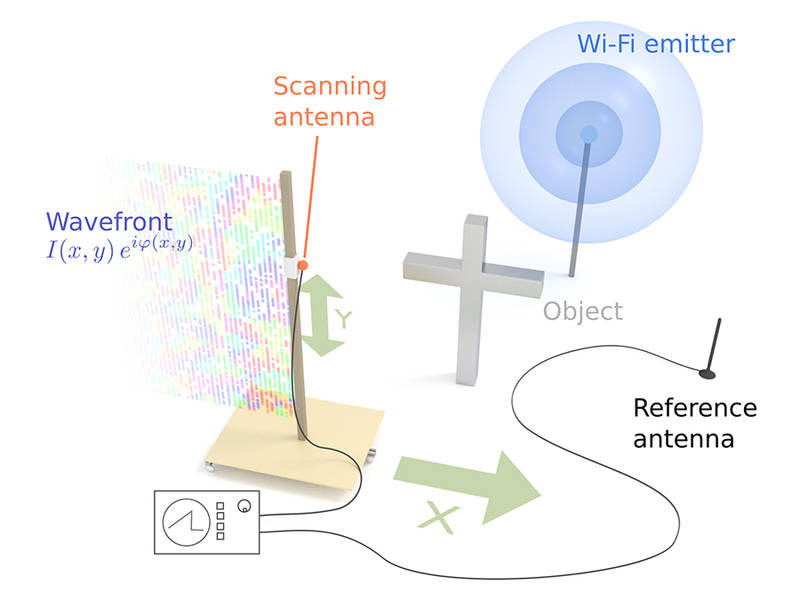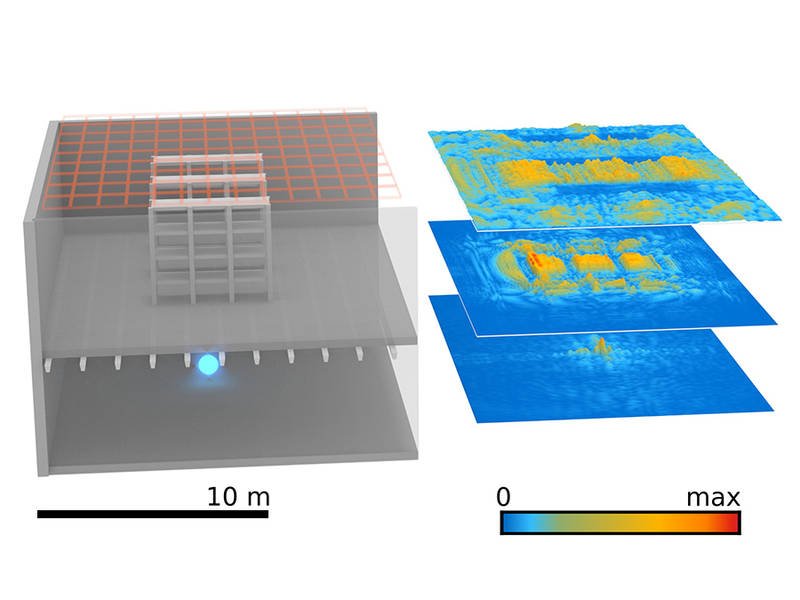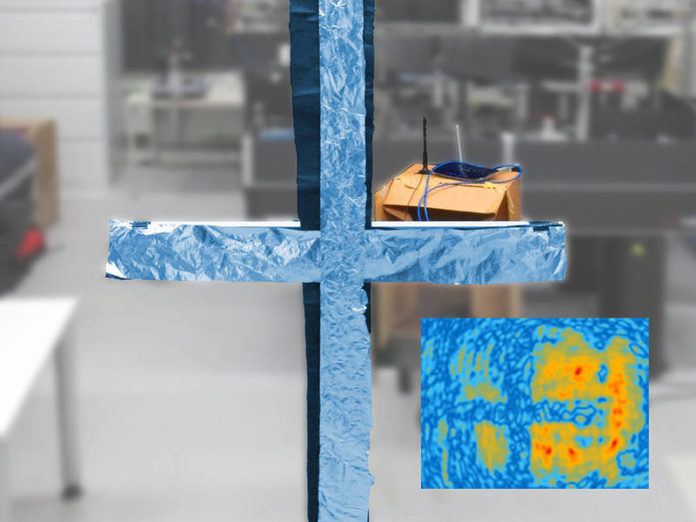German scientists at the Technical University of Munich (TUM) have developed a technology that could give you an ability to see like batman through the walls. They have developed a holography imaging process that makes use of the radiation of a Wi-Fi transmitter.
Philipp Holl said, “It can basically scan a room with someone’s Wi-Fi transmission.”
Dr. Friedenmann Reinhard said, “Using this technology, we can generate a three-dimensional image of the space around the Wi-Fi transmitter as if our eyes could see microwave radiation.”

The process exploits Wi-Fi’s ability to pass through walls by using through two antennas. The antennas record a Wi-Fi field around a particular room. It then captures the intensity and the phase of the Wi-Fi field both from its source spot and the places it bounces off from. It generates the holographic image of that room that proves the concept actually does work.
The most fascinating, this digital holography technique can image an entire space via just Wi-Fi or cell phone signals. It can even picture changes in a signal pattern signify the presence of a person already exist.
Reinhard said, “Of course, this raises privacy questions. After all, to a certain degree, even encrypted signals transmit an image of their surroundings to the outside world. However, it is rather unlikely that this process will be used for the view into foreign bedrooms in the near future. For that, you would need to go around the building with a large antenna, which would hardly go unnoticed. There are simpler ways available.”

As scientists noted, it could be used by spy agencies for legitimate operations requiring the scanning of buildings. It could also be an asset to rescue operations after a disaster such as an earthquake or an avalanche.
Holl said, “These antennas don’t need to be big. They can be very small, like the ones in a smartphone, so that they could be easily wielded even in the smallest, most remote, spaces.”
The concept of treating microwave holograms like optical images allows the microwave image to be combined with camera images. The additional information extracted from the microwave images can be embedded into the camera image of a smartphone, for example, to trace a radio tag attached to a lost item.
